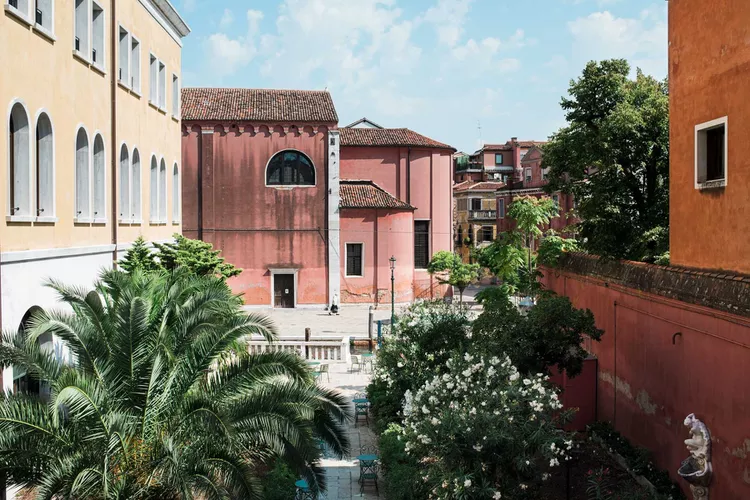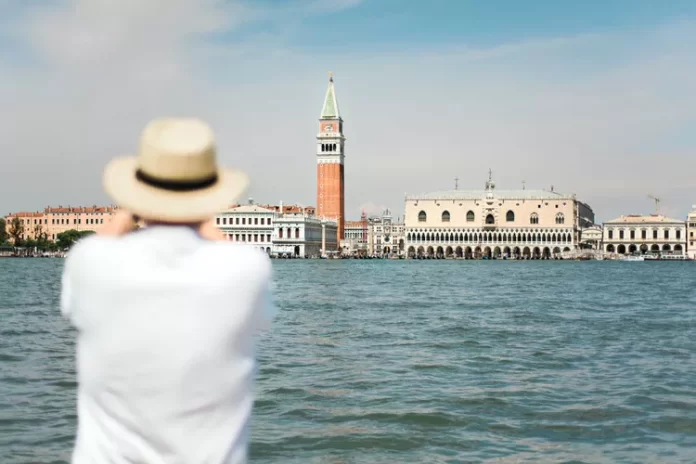Italy’s floating kingdom is a city of paradox—both sustained and threatened by tourism, reliant on and imperiled by the surrounding sea. On a languid winter trip, one writer rediscovers the charms and contradictions of Venice.
His looks were cinematic, as if he’d walked out of a Fellini film, and he greeted me at Venice’s Marco Polo Airport with an aria of lament. How much Venice had suffered! An impossible situation! For years, he said, mass tourism had transformed the city, driving away native Venetians like himself. And, now, the opposite disaster—nobody comes!
First, the acqua alta of November 12, 2019, the worst flood in half a century, sent tourists packing. Now, a new virus had emerged in Wuhan—this was mid-February, in the final innocent days before the pandemic hit Italy—and Chinese visitors would not come to Carnival. For this city, synonymous with imperiled beauty, the bad news felt relentless.
This man, with his chestnut mane and Cortina tan, was my taxi driver, and as we sped along the causeway to the city, he explained that in his lifetime, he had witnessed residential neighborhoods hollowed out by short-term rentals. He had seen bakeries and vegetable stalls replaced by shops selling made-in-China trinkets. And every year, the acqua alta gets worse. Even the lagoon had gone crazy. He pointed to fishermen’s nets, taut as clotheslines in the silver water, set out for moeche, or soft-shell crabs—a spring delicacy that had begun arriving months early, another portent of climate change.
“This is the situation now,” the driver said. “The one I see is not the Venice I know.” His English was limited, but he was fluent in the melodic shadings of speech, the coloratura of Venetian pride. “What is becoming?” he asked. “It is the big question point.”
Venice! A magnificent city, even by Italian standards, with citizens more dashing, more irreformably Italian, than the Genoese, the Florentines, and the descendants of other Renaissance city-states that once battled against the Most Serene Republic and now align with it, if barely, under the tricolor flag.

That’s how I remembered it, at any rate. I had been to Venice six or eight times before this trip, which was planned well in advance of the coronavirus pandemic and completed as northern Italy went into lockdown. But I hadn’t been back since the early 2000s, when I lived in Paris and would find any excuse to go to Italy on assignment.
The first time I saw Venice, I was met at the airport by art restorer Toto Bergamo-Rossi, who welcomed me from the wheel of his elegant wooden speedboat, its varnished hull as shapely as a viola da gamba’s back. We skittered across the lagoon on glittering waves, trailed by salt spray. As the medieval city floated into view, it seemed as fantastical to me as if a coral reef had risen from the deep. We glided through a maze of canals that smelled of seaweed, between palaces etched by water and sun; I could nearly touch the barnacle-encrusted stones.
Anything other than a sea-level approach to the city is a letdown, as I realized on this latest visit when my four-wheeled taxi pulled up to Piazzale Roma, Venice’s drab terrestrial entrance. I probably could have walked the last half-mile to Il Palazzo Experimental, my waterside hotel in the Dorsoduro neighborhood, but a motoscafo, or water taxi, waited to carry me the final stretch.
Ten minutes later, I stood on the Fondamenta delle Zattere calling back to the driver, “Dov’è?” He pointed to a pink-brick palazzo and floated away. Its Gothic doorframes and ropework-trimmed loggia, all carved from white Istrian stone, seemed to quiver against the façade—the effect of sunlight bouncing off the Giudecca Canal.

The itinerary for my trip was modest: to walk around, regain a sense of direction, and try to disprove the traveler’s adage that Venice lacks good food. It’s not that I had no plans whatsoever. I intended to drop in here and there while allowing time for idleness. Above all, I planned to avoid the tourist mainstream and look instead for eddies of calm—living in Venice for a week as if I didn’t have to leave. How could I have expected the twist ending?
Il Palazzo Experimental is the architectural equivalent of new wine in an old bottle. The centuries-old palace reopened last year after a renovation by the trendy Experimental Group, which operates outposts in London and Paris, among other places. The interior décor was as richly colored as a Venetian old master painting. I counted three shades of blue plaster in my room, as well as bottle-green worsted-wool curtains, a Prussian-blue carpet trimmed with brass inlay, and terrazzo floors the saline gray of oyster shells. The bathroom was yellow; the dining room downstairs, conch pink. The design also made jaunty reference to Gio Ponti, Memphis Group furniture, and the striped shirts of the city’s gondolieri. It was a lot to take in, but then, so is Venice. It’s a city where form has never followed function, unless you consider conspicuous display a function.










